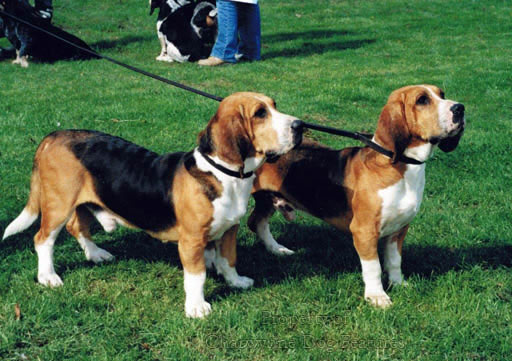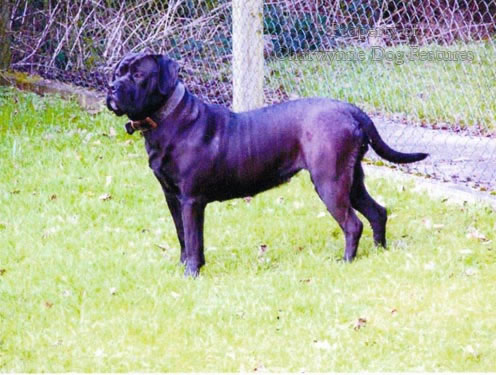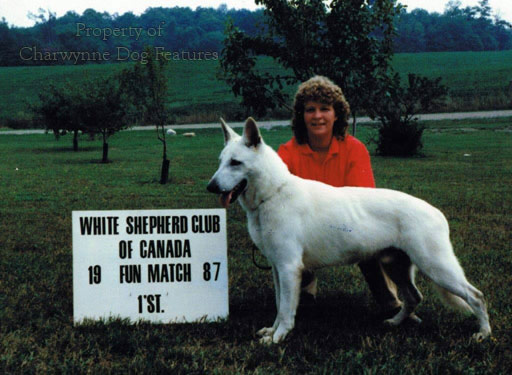587 Conformation Matters
CONFORMATION MATTERS
by David Hancock
 All over the world there are enthusiasts at work, pioneering their particular breed or type of dog. Most work with established breeds, ideally in pursuit of enhancement. Some work towards kennel club recognition for their favoured type; others are seeking variations on breeds already recognised, some are seeking to avoid the inbred or exaggerated features of accepted breeds and many just promote superlative hunting or herding dogs and don't give a damn about kennel clubs. They are m
All over the world there are enthusiasts at work, pioneering their particular breed or type of dog. Most work with established breeds, ideally in pursuit of enhancement. Some work towards kennel club recognition for their favoured type; others are seeking variations on breeds already recognised, some are seeking to avoid the inbred or exaggerated features of accepted breeds and many just promote superlative hunting or herding dogs and don't give a damn about kennel clubs. They are m.jpg) ostly nonconformists and often deserve our admiration. As Emerson put it a hundred and fifty years ago: 'Whoso would be a man must be a nonconformist.' The slavish adherence to a closed gene-pool is not always wise and it takes a nonconformist, as Emerson hinted, to be prepared to stand alone. The recognition of a breed usually relies on vigorous promotion by a group of enthusiasts rather than vision from a kennel club.
ostly nonconformists and often deserve our admiration. As Emerson put it a hundred and fifty years ago: 'Whoso would be a man must be a nonconformist.' The slavish adherence to a closed gene-pool is not always wise and it takes a nonconformist, as Emerson hinted, to be prepared to stand alone. The recognition of a breed usually relies on vigorous promotion by a group of enthusiasts rather than vision from a kennel club.
The West Country Harrier, the Welsh Foxhound, the Studbook Harrier, the English Basset and the now dispersed but very distinctive Dumfriesshire Foxhound represent the hunting fraternity's contribution. This sad dispersal resulted from the RSPCA-led banning of fox-hunting; Richard Ma rtin, whose energy and vision brought about the formation of the RSPCA, was a keen fox-hunter. Such hounds may well be the soundest dogs in Britain. The Trailhounds follow scent not quarry but are probably the fittest dogs in Britain. Working terriers like the Fell, the Patterdale, the Plummer and the Sporting Lucas flourish and are likely to survive long after recognised terrier breeds like the Sealyham, the Skye and the Dandie Dinmont have disappeared. Other unrecognised types like the Balla, the Letts, the Clapheaton and the Heysham have not found favour. The 'Hancock' lurcher, bred by my namesake, and available in many hundreds, may well be the soundest merle dogs yet bred. Welsh Wheaten Terriers are being promoted by some enthusiasts.
rtin, whose energy and vision brought about the formation of the RSPCA, was a keen fox-hunter. Such hounds may well be the soundest dogs in Britain. The Trailhounds follow scent not quarry but are probably the fittest dogs in Britain. Working terriers like the Fell, the Patterdale, the Plummer and the Sporting Lucas flourish and are likely to survive long after recognised terrier breeds like the Sealyham, the Skye and the Dandie Dinmont have disappeared. Other unrecognised types like the Balla, the Letts, the Clapheaton and the Heysham have not found favour. The 'Hancock' lurcher, bred by my namesake, and available in many hundreds, may well be the soundest merle dogs yet bred. Welsh Wheaten Terriers are being promoted by some enthusiasts.
Dorset Olde Tyme Bulldogges and the Victorian Bulldogs I have judged are far healthier specimens than the majority of the KC Bulldogs I see at shows. Show fanciers tend to live in their pedigree world and many need to open their eyes and understand what livestock breeding is essentially about. It is never good enough just to recycle old genes in the pious hope that an outstanding dog will appear, like magic, one day. Livestock breeding has to be the perpetual positive pro-active seeking of improvement not the craven perpetuation of purebred stock, whatever their genetic health or the soundness of their anatomy. The Gafaelgis or Black Welsh Mastiffs of Gareth Williams are sounder dogs than the KC Mastiffs I see in the show ring; are we seeking sounder healthier Mastiffs or blindly perpetuating a closed gene pool?
The fanciers of Shiloh Shepherds, White GSDs and Saarloos Wolfdogs are only doing what our distant ancestors did, seeking an unexaggerated, soundly-constructed, virile breed and not just marching in step with the others. I mourn the loss of the impressive GSDs of my youth, displaying a level topline and a hindquarter which would not disgrace a Foxhound. Half a century ago, some GSD breeders decided to lengthen the back, despite the evidence from America and experience from service dog users. Breeding for excessive angulation in the breed too has combined to produce poor movement, cow hocks, spinal problems and disc-size difficulties. Once, when working in London thirty years ago, I walked behind a Met police-GSD and its handler, for the best part of a mile. The hind movement of the dog was simply appalling. The dog reflected the faulty thinking in the breed at that time, time for a nonconformist to step forward!
We know that old-established breeds like the Standard Poodle and the Balinese Mountain Dog have a relatively healthy genotype, but that newly-created breeds can have rather too much 'genetic junk'. Who knows what genetic defects are present in the gene pool of Moscow Terriers, Munchkins and Mi-Kis? Breeders of pack hounds and hunt terriers have long been less tolerate of sickly, diseased or flawed dogs; all too often flawed pedigree dogs are bred from. Ranchers using a Huntaway, a Catahoula Leopard Dog or a Florida Cow Dog expect their dogs to function; their views on breeding are not hidebound but rooted in necessity. A catch-dog like the Alapaha Blue Blood Bulldog either functions or it gets kicked to death by stroppy bulls. What are the criteria used to select breeding material in most purebred dog breeds? Appearance? Gait? Coat? Colour of coat? Fad of the Day? Just having champions as parents?
Kennel Clubs, whether anxious for more registration money or succumbing to the persistence of a determined bunch of fanciers are not slow to recognise newly-created breeds, as the Cesky and Russian Terriers, the Eurasier and the Nova Scotia Duck Tolling Retriever demonstrate. One day soon emergent breeds like the Alaskan Kai Klee, the Utonagon, the Chinook and the Belgian Mastiff will join them. Some will have been promoted by nonconformists; once recognised they will all have to conform. But who apart from show ring judges will dictate their future form? There will be no tests of functional ability, no geneticist to screen for defects and little likelihood of checks to prevent exaggeration. In the 21st century, is that acceptable? Time for a nonconformist approach.